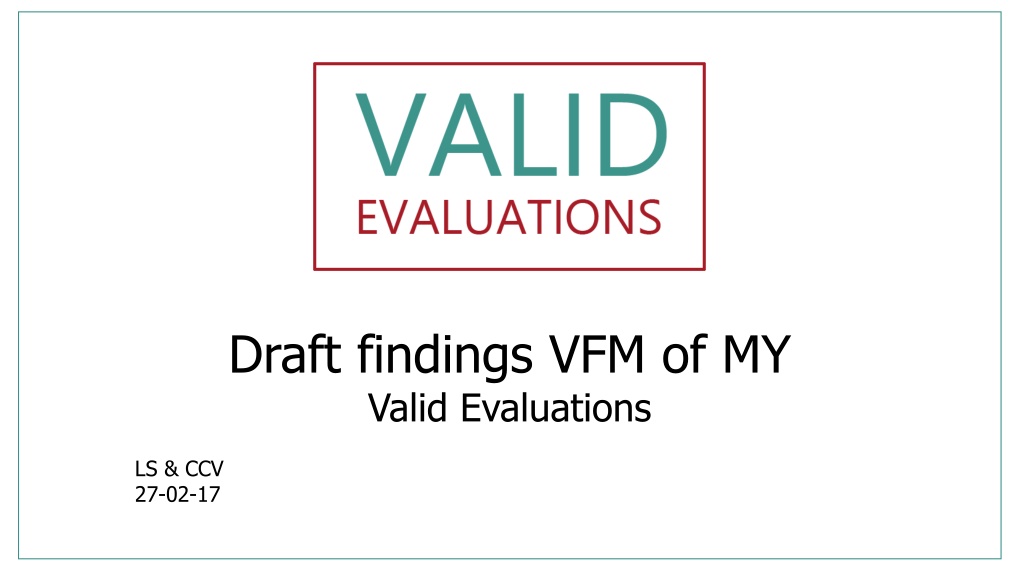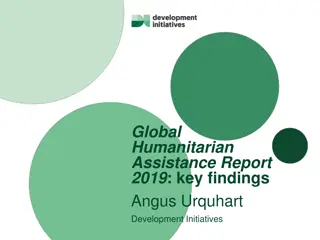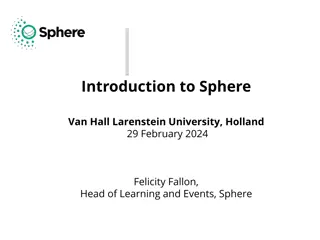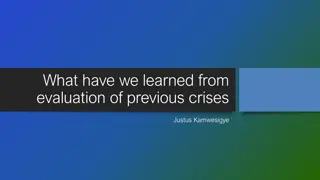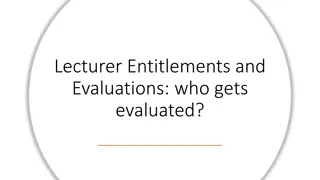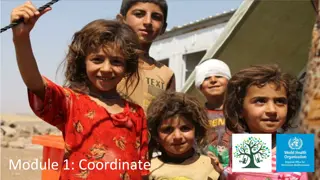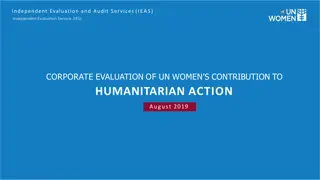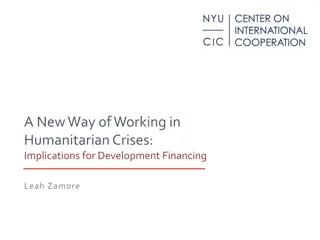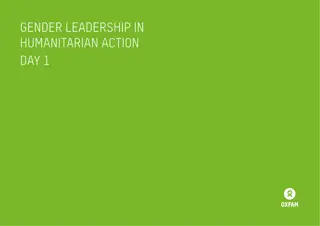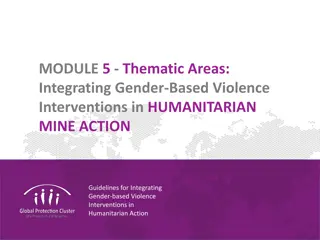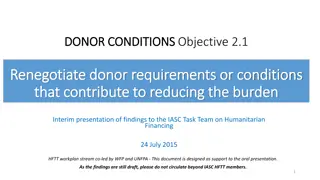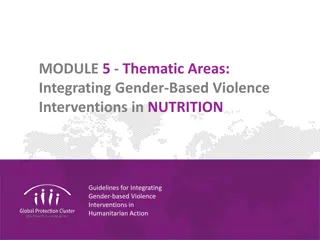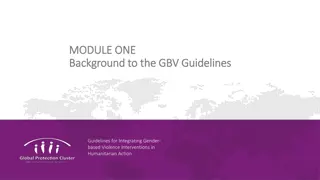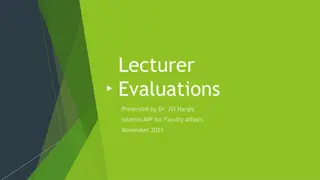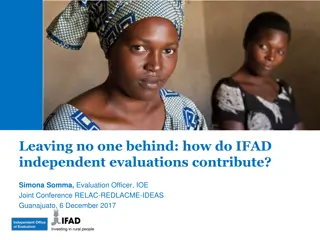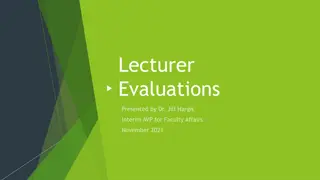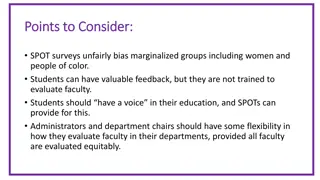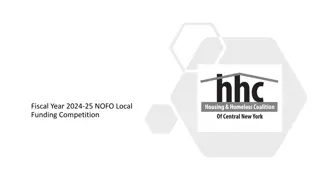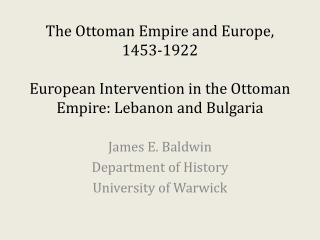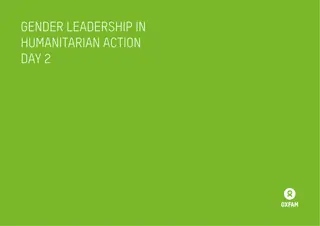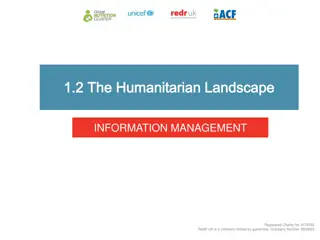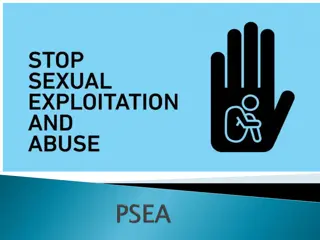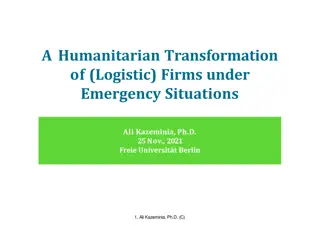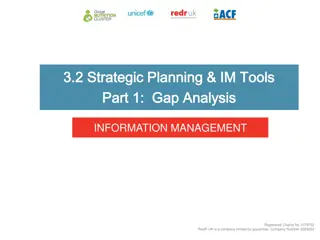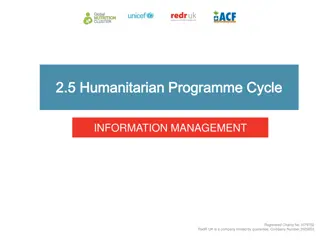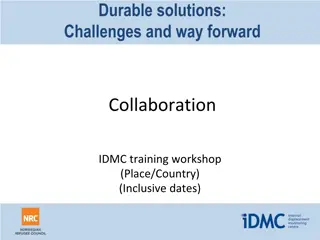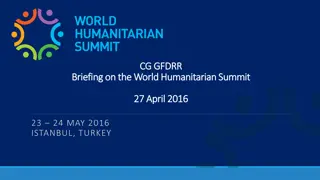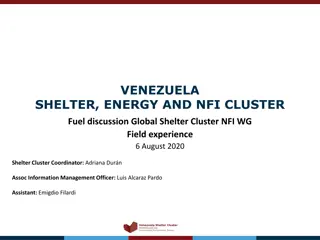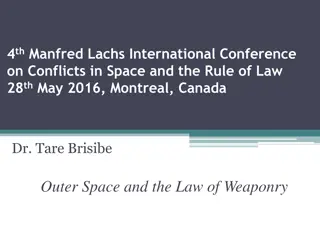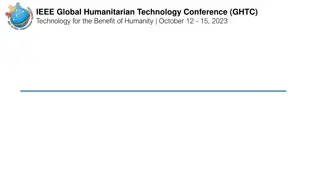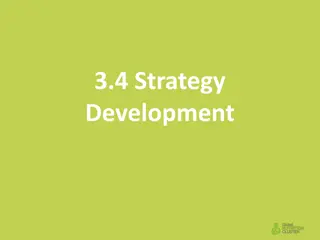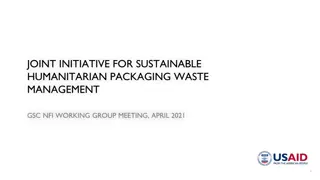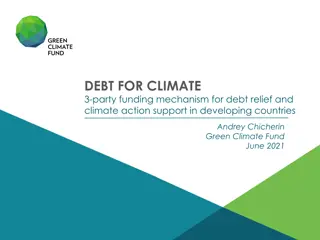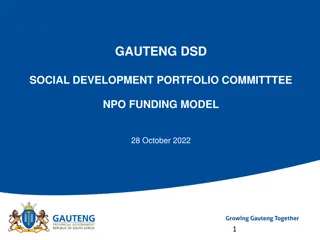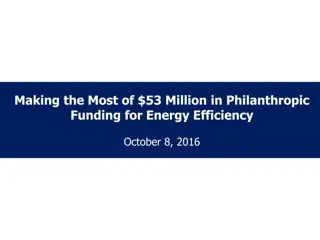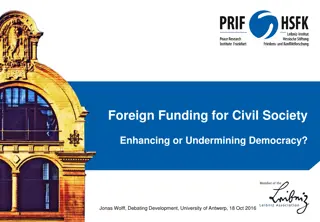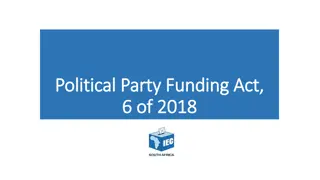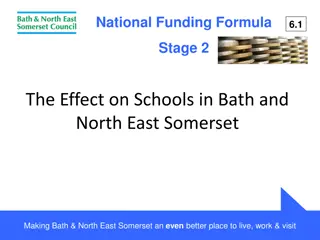Impact of Multi-Year Funding on Humanitarian Evaluations in Multiple Countries
A study spanning 3.5 years across Ethiopia, DR Congo, Sudan, and Pakistan evaluates the effectiveness of Multi-Year (MY) funding in building resilience, enabling early action, and enhancing value for money (VFM) in humanitarian projects. Findings suggest that while MY funding facilitates operational flexibility and smarter resource allocation, various challenges like funding arrangements and timeframe constraints still exist. The research highlights the importance of combining MY funding with other strategies for optimal impact.
Download Presentation

Please find below an Image/Link to download the presentation.
The content on the website is provided AS IS for your information and personal use only. It may not be sold, licensed, or shared on other websites without obtaining consent from the author. Download presentation by click this link. If you encounter any issues during the download, it is possible that the publisher has removed the file from their server.
E N D
Presentation Transcript
Draft findings VFM of MY Valid Evaluations LS & CCV 27-02-17
Introduction 3.5 year study. 4 countries. Ethiopia, DR Congo, Sudan and Pakistan. Within that a mix of UN agency and NGO projects. 3 questions asking whether MY helps build resilience, helps early action (especially if combined with contingency) and helps VFM. Q1 uses primary data gathering with communities including a qualitative panel study. Q2&3 use agency data and KIIs.
Introduction (2) Report on the VFM of contingency in Ethiopia (out). Draft report on VFM (circulate next week). A report on whether resilience investments and early action helped avoided losses in Ethiopia (out in March). Two studies on the role of Women in Shocks and Health Shocks and small Associations (both by the end of the year). Main report will be produced early 2018.
VFM of MY & contingency draft findings MY definitely enables agencies to do things differently, but its not a silver bullet. On early action in Ethiopia, the fact that DFID had a multi-year business case allowed it to shift money around relatively quickly and bring resources forward and that allowed for some quite rapid emergency funding once the scale of the problem was agreed. For the partners, WFP in Ethiopia have been able to do smarter procurement which has enabled savings - some quite significant. Whilst MY is not strictly necessary for this to happen, in practice it is an enabler and makes it a lot easier.
VFM of MY & contingency draft findings (2) In terms of the wider impact on agency behaviour of MY, the biggest we have observed is a tendency to do more on design, research, adaptive programming, iterative improvement and generally to enhance quality (or at least to work in a way likely to enhance quality). In DRC, UNICEF iterated their cash programming through using action research. In Sudan both DFID partners - an NGO consortium in Darfur and a UN consortium in the East took longer over design, incorporated research and changed things as they went along. Basically, MY gives agencies the space to think and to change things to try and meet higher and broader objectives (based on our quite small sample). Of course, not all take this opportunity.
VFM of MY & contingency draft findings (3) However there are quite a few impediments. Pass through is a big one, as are tranche-funding arrangements. Timeframes of 18 months are hardly multi-year , and there is a confusion about whether humanitarian funding can even be used for longer term programming. The take away here is that MY shows promise but there need to be other things alongside it - more tools, longer term planning, guidance, case studies; probably donors should insist on action research components for these types of complex programmes. But in general, it shows promise, especially in tackling complex intractable problems.
Does MY help build resilience? Q1 research still ongoing. So far panel data collected in 9 areas of 4 countries over 3-4 rounds in each place. Roughly 1,800 qualitative HH interviews; 1,000 survey (quant) in Ethiopia through AL; 200+ focus group interviews. Also agency KIIs, secondary data. Early signs are not that encouraging. Resilience funding doesn t really appear to be at a scale in our study areas to make a discernible difference. Apart from Ethiopia El Nino haven t had big covariate shock during study period. Health shocks the biggest idiosyncratic shocks (HH level).
Does MY help build resilience (2)? In Ethiopia El Nino, in our study area, 4 failed rains over 1.5 years overwhelmed people s capacity to cope. Most interviewees received food aid and relied on it. People closer to urban or administrative centres tended to do better. Very few resilience projects beyond PSNP some small water projects, livelihoods diversification, training, fodder production. But not at a scale to make a difference. In the other study areas successive shocks appear to have left people highly vulnerable. Old livelihood systems no longer reliable meaning more routine use of coping strategies, health shocks and insecurity. But more analysis needed. All areas studied appear politically marginal and under-invested.
